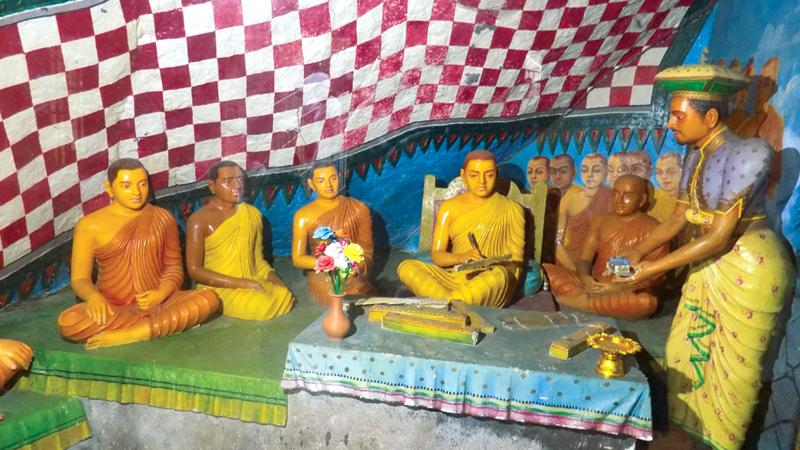
Alu Vihara is a religious, cultural, historical and archaeologically important place at Aluviharaya village in the Gampahasiya pattuwa in the Matale district, 32 kilometres North of Kandy.
During the first century B.C., the island was ravaged by anarchy and starvation and the very survival of Buddhism was threatened. This was because at the time, its teachings were orally transmitted by bhikkhus and many had died or left the island.
Some of the surviving bhikkhus then decided to commit the whole of the Tripitaka to writing on ola leaves. The Fourth Buddhist Council was convened and as a result, the Tripitaka was written for the first time in island’s history. In this way, the teachings were preserved in its original form and Buddhism survived the difficult period. The momentous event was held at the Aluvihara Cave temple originally known as the Aloka Lena or “Cave of Light”
British Major Forbes (1840) has stated about this incident in his book titled “Eleven years in Ceylon,volume 1, P.346 as follows.
“King Walagambahoo assembled the bhikkhus, who here compared their texts, which were then or soon afterwards, committed to writing, and formed the Banapotha. This took place about ninety two years B.C. and for two hundred and fourteen years previous to that time, if not from the date of Gauthama’s passing away, his doctrines had been by tradition only.” A museum has been set up in the premises displaying ancient tools and equipment and a collection of Tripitaka books including attractively bundled ola leaf texts.
It is said that during the Dutch period, the Dutch had destroyed several caves and burnt a large number of ola books. It is also said that in 1803, the British had destroyed the cave temple. There are 15 rock caves with drip ledges and inscriptions in the Alu Vihara premises.

